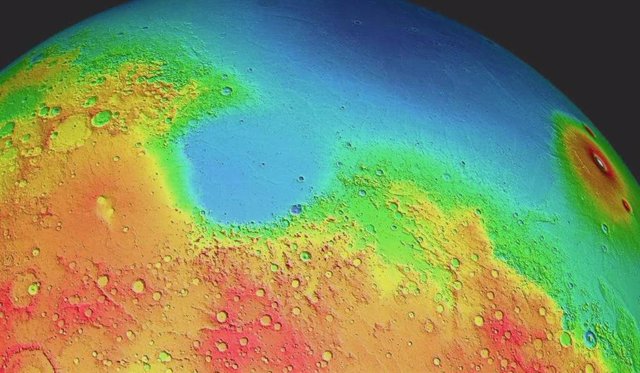May 16. (EUROPE PRESS) –
A strong earthquake in the final year of NASA’s Mars InSight mission has allowed researchers at ETH Zurich to determine the overall thickness and density of the planet’s crust.
On average, the Martian crust is much thicker than that of Earth or the Moon, and the planet’s main source of heat is radioactive.
In May 2022, NASA’s InSight spacecraft recorded a strong earthquake on Mars in which seismic waves circled the Martian surface up to three times.
Based on surface waves, the ETH Zurich researchers were able to determine the global average thickness of the Martian crust. They also found that the density of the crust is similar in the northern and southern hemispheres, while their thickness differs significantly.
Seismic velocities provide information about the interior structure at different depths. Previously, observed surface waves from the two large meteorite impacts also allowed for regional findings along their specific propagation paths. “Now, we have seismic observations that represent the global structure,” he says. it’s a statement Doyeon Kim, a seismologist at the Institute for Geophysics at ETH Zurich and lead author of the study, which is published in Geophysical Research Letters.
Combining their newly obtained results with existing data on Mars’ gravity and topography, the researchers were able to determine the thickness of the Martian crust. It has an average of 42 to 56 kilometers. On average, the crust is thinnest in the Isidis impact basin at about 10 km and thickest in the Tharsis province at about 90 km.
To put this in perspective, seismic data indicates that the earth’s crust is on average 21 to 27 kilometers thick, while the lunar crust, as determined by the Apollo seismometers, it is between 34 and 43 kilometers thick.
“This means that the Martian crust is much thicker than that of the Earth or the Moon,” says Kim. In general, the smaller planetary bodies in our solar system have a thicker crust than the larger bodies. Kim explains: “We were lucky to observe this earthquake. On Earth, we would have a hard time determining the thickness of the Earth’s crust using the same magnitude of the earthquake that occurred on Mars. Although Mars is smaller than Earth, it transports seismic energy more efficiently.”













![[Img #74842]](https://thelatestnews.world/wp-content/uploads/2025/01/Artificial-intelligence-in-eSports-Improving-player-performance-300x200.jpg)